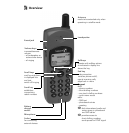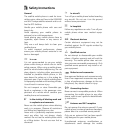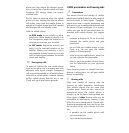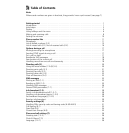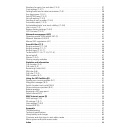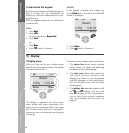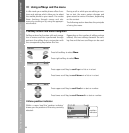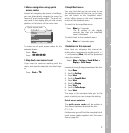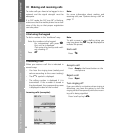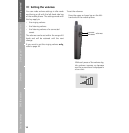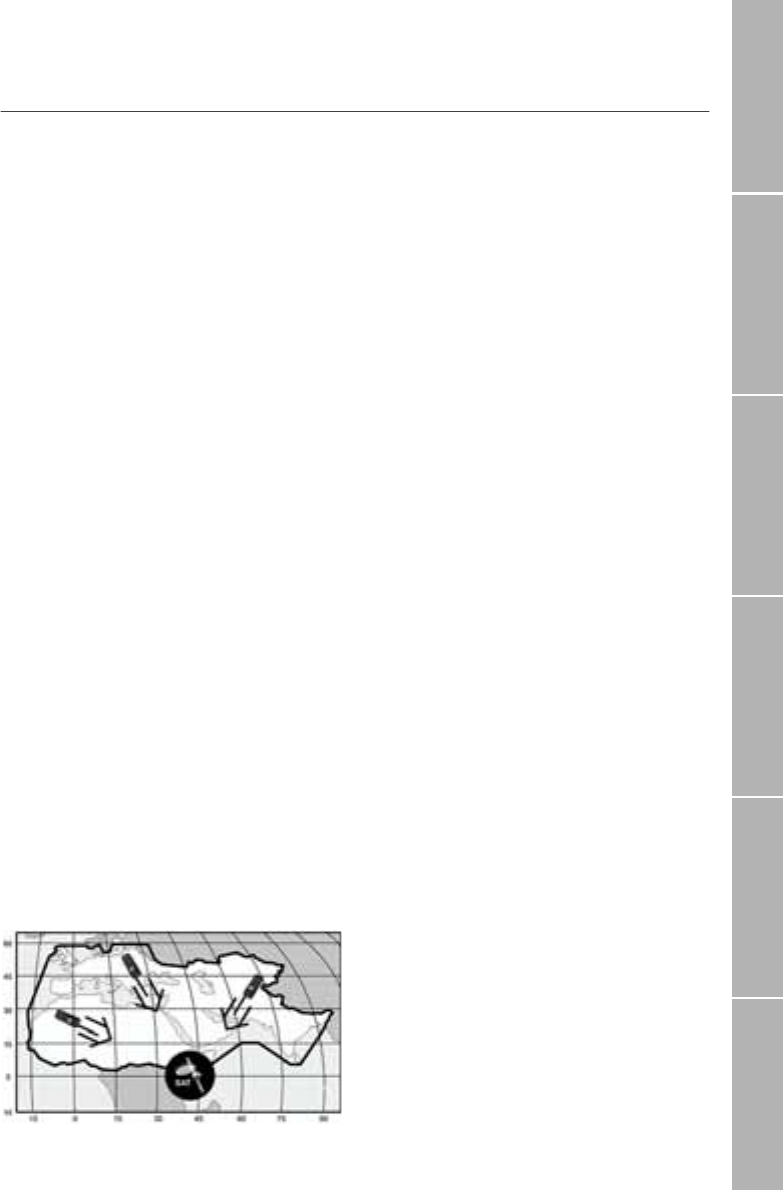
1
Phone/Call settingsNetworkSound & AlertStatistics/InfoGPS facilitiesWAP Internet
! Getting started
: Introduction
Your HUGHES-7101 is a new generation mo-
bile phone combining satellite (SAT), GSM-
900 (Global System for Mobile communica-
tion at 900 MHz) and GPS (Global Position-
ing System) technologies. This provides you
with the advantages of three technologies in
one single mobile phone. Its operation in sat-
ellite mode is virtually identical to that of
GSM mode. Operations that you may be fa-
miliar with using a typical GSM mobile
phones will work in a very similar manner
when you are using the Thuraya satellite ser-
vice. There are, however, a few specific
differences between GSM and Satellite oper-
ation. The purpose of this section is to make
you aware of these differences.
When the mobile phone is idle on the satel-
lite system and has good signal strength,
calls can be received without the need of
extending the antenna. However, when a
satellite call is answered or initiated the
antenna must be pulled out entirely.
Watch the signal strength indicator on the
display and move the mobile phone for best
connection quality. Satellite calls require the
mobile phone to have a clear open surround-
ings with no obstruction. The presence of
obstacles such as buildings, trees or moun-
tains between the mobile phone and the sat-
ellite will generally prevent communication.
To maintain good call quality, it is also impor-
tant that the mobile phone's antenna be
pointed roughly in the direction of the
satellite:
High Power Alerting
The Thuraya system features a ’High Power
Alerting’ capability that allows you to be no-
tified of incoming calls even when your mo-
bile phone has poor signal coverage. When
the mobile phone receives a High Power
Alerting signal it will alert you with an ’early
ring’ and a special display message (see page
9). To answer the call, you must immediately
extend the antenna and move the mobile
phone into a position that has a clear ’line of
sight’ to the satellite. When this has occurred
the mobile phone display will change,
prompting you to answer the call and pro-
ceed with conversation. If the call is not an-
swered promptly after the High Power Alert-
ing signal is received, the calling party will be
diverted to voice mail and/or an announce-
ment stating that you are not available to an-
swer.
Just like GSM, the satellite coverage area is
divided into many different service regions.
The mobile phone searches the network
automatically (see page 42) and determines
which service region is active by registering
its presence with the Thuraya system. If the
mobile phone has not been able to update
this registration due to a weak signal, the
registration information will become out of
date or ’stale’. This is indicated on the display
by a blinking SAT icon in the left of the signal
strength indicator. This condition will clear
automatically once signal conditions improve
and a call is made or a period of time elapses.
You also have the option to speed up that
procedure by manually having the mobile
phone register with the Thuraya system.
This is accomplished with the function
SAT
Registration
in the mobile phone's menu (see
page 43). Make sure you have good SAT sig-
nal strength before starting this operation.




